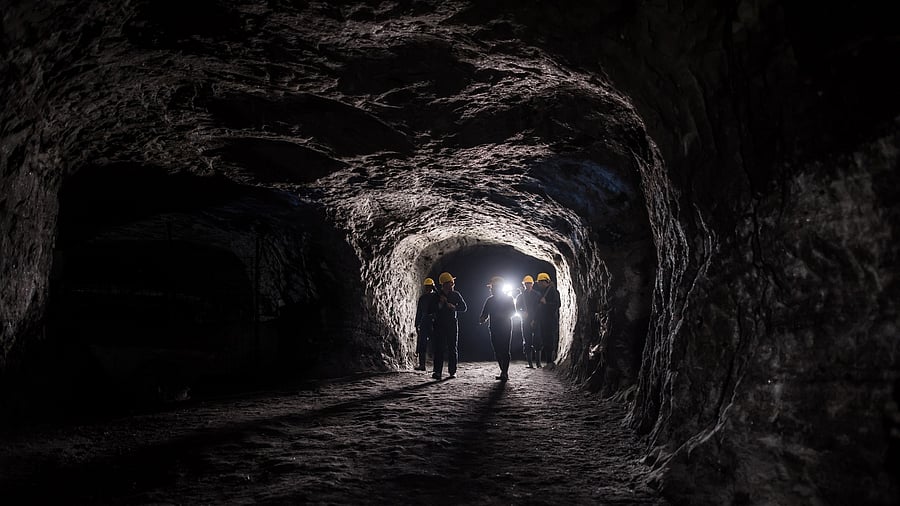
Representative image showing a mine
Credit: iStock Photo
The rat-hole mining tragedy in Assam’s Dima Hasao district in which a number of workers have lost their lives is not the first of its kind. Bodies of four workers who were trapped in the mine have been recovered but it is feared that there were at least nine workers in the mine when it collapsed. It has been more than a week since the 300-feet shaft flooded and caved in, and rescue operations are still on. The exact number of workers trapped may not be known because no proper records are kept about the workers or the functioning of the mine. According to reports, about 40 workers had entered the mine but when the flooding started, some managed to escape. The water has to be pumped out of the mine to recover the bodies and it is not going to be easy.
Rat-hole mining is an unscientific and illegal form of mining prevalent in some parts of the North-East. It is called rat-hole mining because the tunnels are narrow and allow the movement of only one person. The underground passages are interconnected but they become veritable traps for workers when the mines collapse or flood. Coal is extracted in the most hazardous conditions without protective measures or safety gear for the workers. Fatalities have occurred because of inhalation of poisonous gases as well. Workers are allured with high wages to go into the dangerous mines. Rat-hole mining was banned in 2014, but it is still carried out in many places. In 2018, 15 workers died after being trapped in one of these mines in Meghalaya. It is not just a hazardous practice; it also presents major environmental risks. It was the National Green Tribunal which banned this form of mining. Rat-hole mining also involves corruption with politicians, officials and mine owners all having stakes.
Governments in the North-East were not keen on enforcing the ban order. The Meghalaya government got a resolution passed by the State Assembly in 2015, requesting the Centre to exempt the state from the purview of mining laws under the 6th Schedule of the Constitution. Whenever an accident occurred, the Centre and the state governments have blamed each other. The illegal activity is still widespread in Assam and Meghalaya, especially the Jaintia Hills. There are reports of rat-hole mining continuing in some areas even after reports about the latest tragedy surfaced. It not only endangers workers’ safety, but also causes biodiversity loss and damage to water bodies and croplands. Governments must ensure that the practice is completely stopped.
